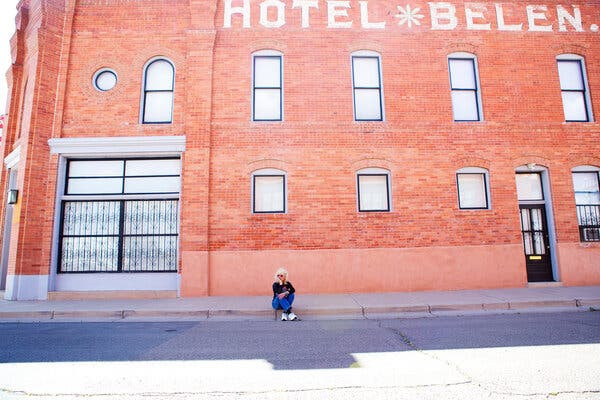
T’s Art issue looks at the iconoclastic artists who have found power in saying no.
BELEN, N.M., IS a sun-bleached stucco town set in a vast expanse of desert. From here to the horizon, there’s almost nothing taller than a telephone pole. Highway signs offer ominous haikus (“Notice / Do not pickup hitchhikers / Prison facilities”) and inadvertent riddles (“Dust storms may exist”). Although it’s only 35 miles south of Albuquerque, Belen feels utterly removed from the rhythms of urban life.
“I never in my wildest dreams thought I’d end up living here,” said the artist Judy Chicago, as she considered the place she’s called home for about thirty years. Belen does seem like an odd choice for a feminist icon whose recent honors include retrospectives at LUMA Arles, an arts center in southern France, and the Serpentine Galleries in London. It’s a world away from Los Angeles, where Chicago came up in the 1960s, and New York, where her masterpiece “The Dinner Party” (1974-79) is on permanent display at the Brooklyn Museum. But New Mexico has given Chicago, 85, what art world centers cannot. “It’s very difficult to think against the culture, which is what I’ve done for my career,” she said. “And in order to do it, I had to have an immense amount of psychic privacy.” She found that privacy in the silence and stillness of the desert.

Contrary to their reputations, big cities can be stifling places for artists. The same density of creative souls that fosters community also breeds competition. In New York, where there are hundreds of commercial galleries, it can be difficult to escape the noise of a rival’s latest triumph or show up to a party where everyone’s read your bad reviews. The ability to experiment un-self-consciously fades as careers calcify around successful formulas or fatal missteps. “People here in New Mexico have reinvented themselves, invented their lives, because there’s not a strong structure here that you’re supposed to fit in,” said Chicago. “I never fit in.”
Chicago belongs to a larger group of artists who made for the mountains and deserts of New Mexico decades before the current exodus of artists from urban centers was underway. Back then, to disappear physically was to risk being forgotten. “I felt like I was stepping out of the cosmos completely,” said the sculptor Larry Bell, 84, who left Los Angeles for Taos in 1973. Moving, he said, was “the best choice and the worst choice at the same time.” There was a robust regional art market and an appreciation for modern painters like Georgia O’Keeffe, but no context for Bell’s conceptual work, luminous glass environments that create subtle optical effects. To get back on collectors’ radars, Bell reestablished a studio in Los Angeles in 2002 and commuted from there to Taos, a 14-hour drive, every few weeks, for the next 18 years.